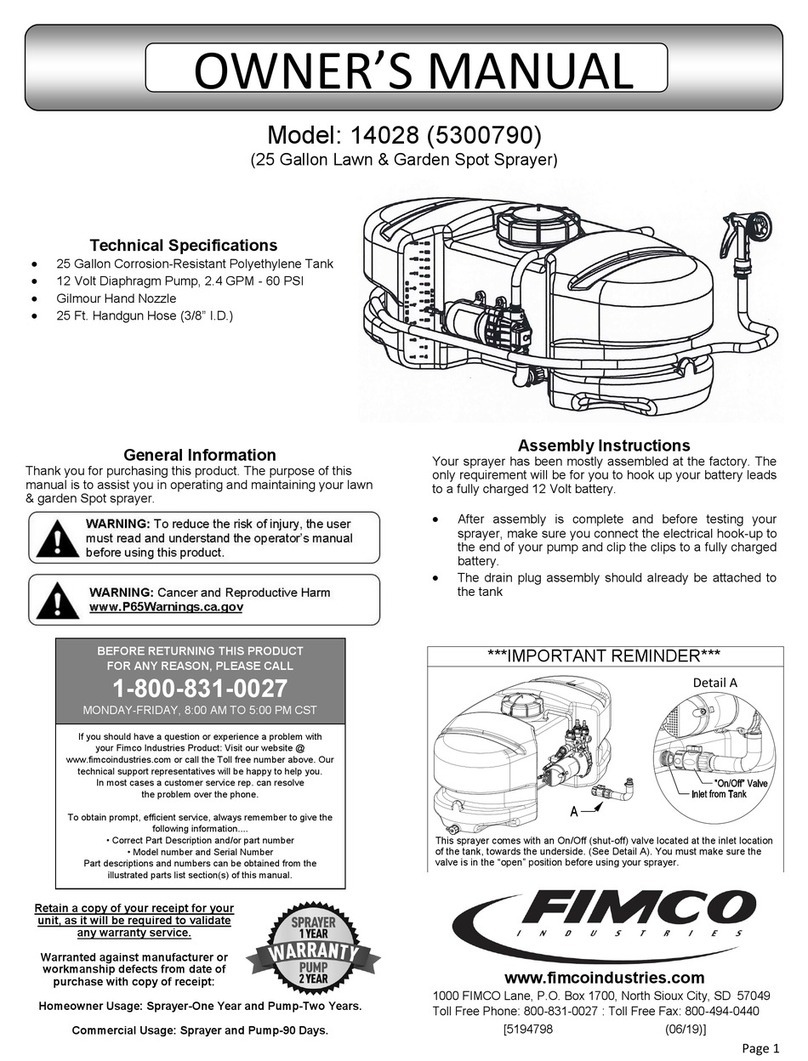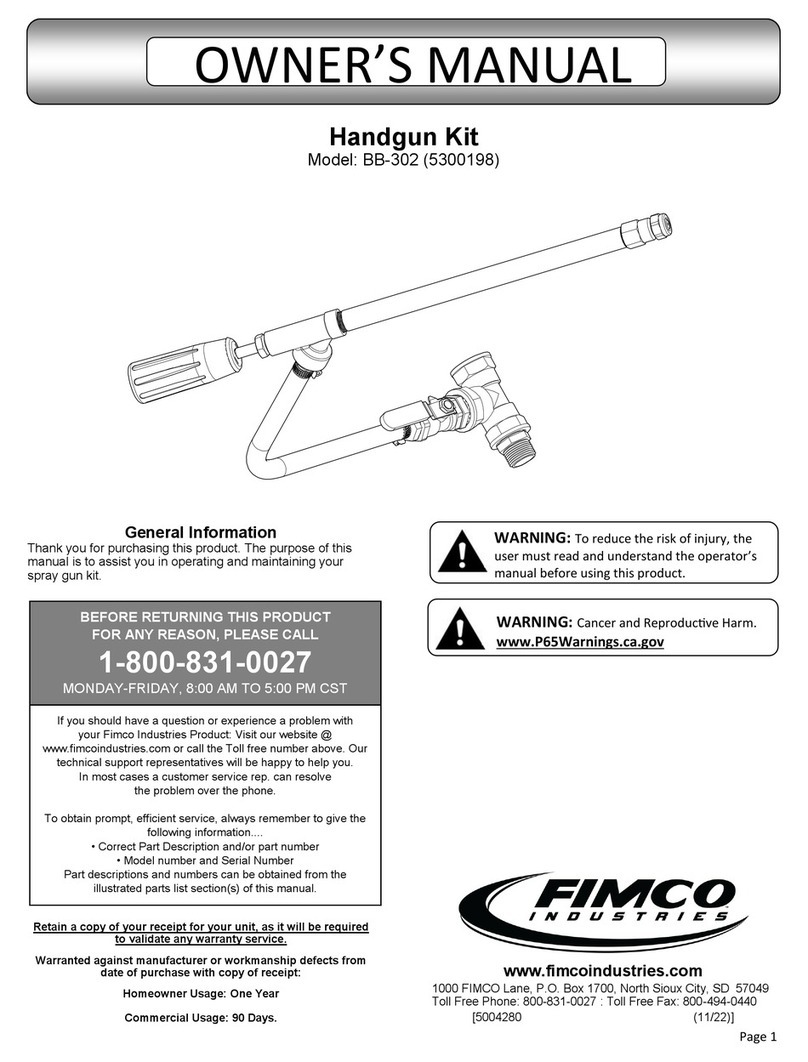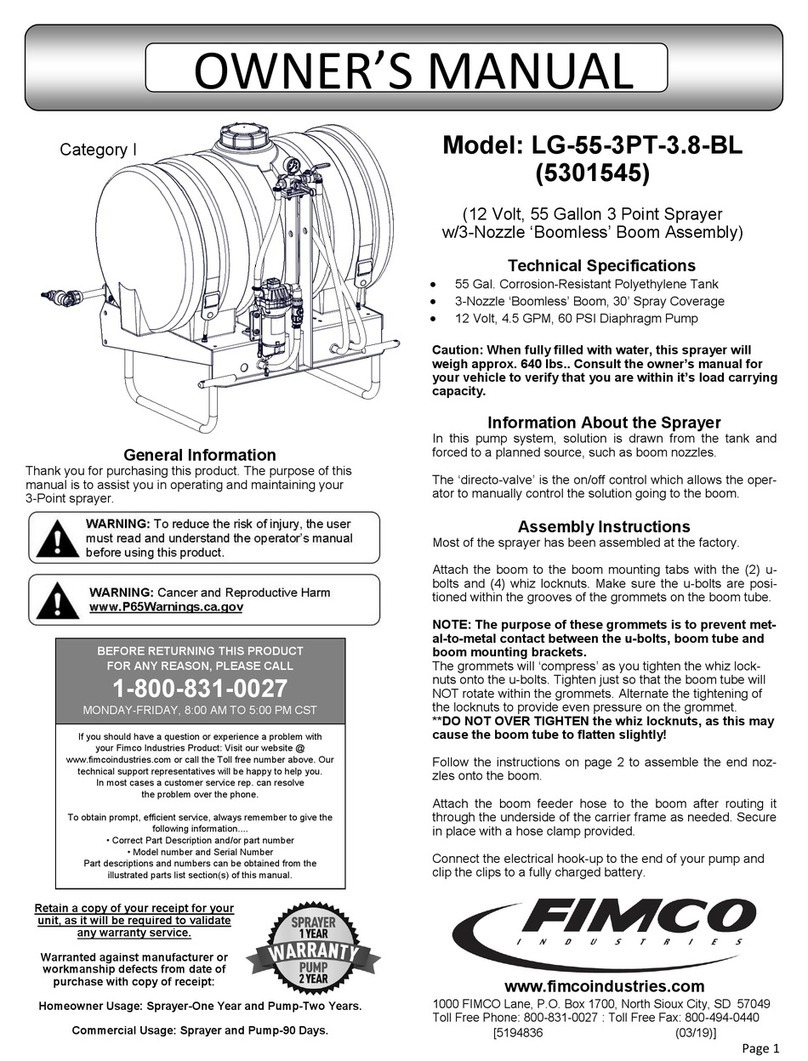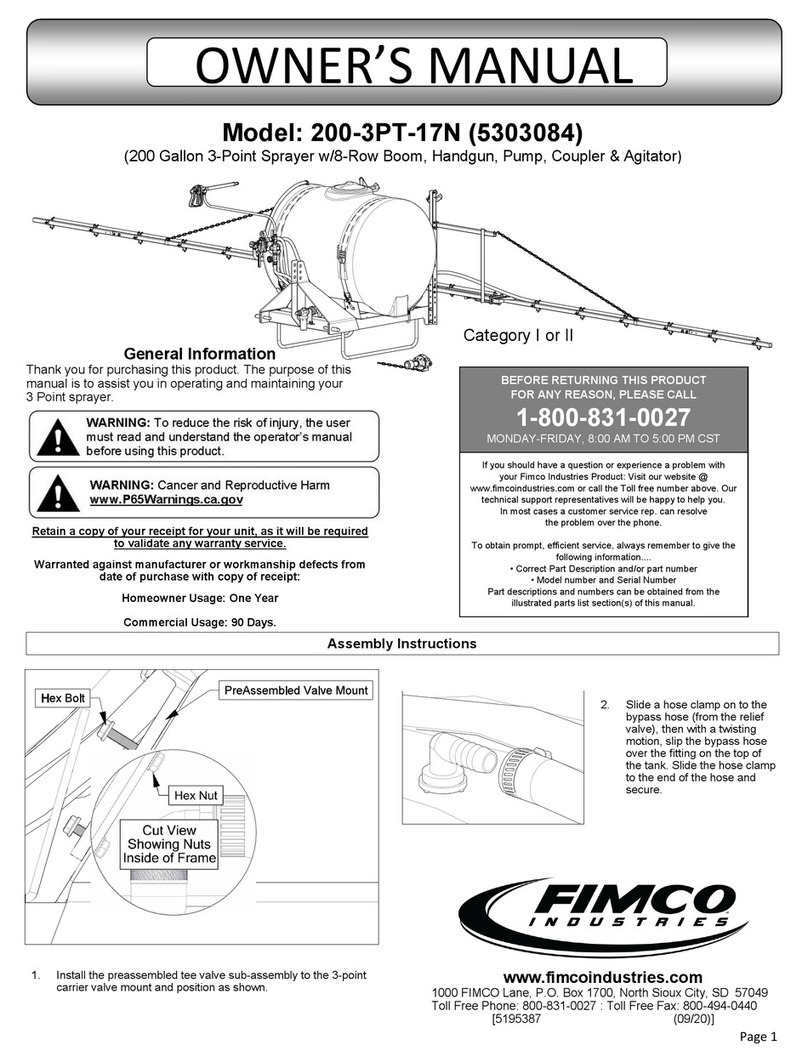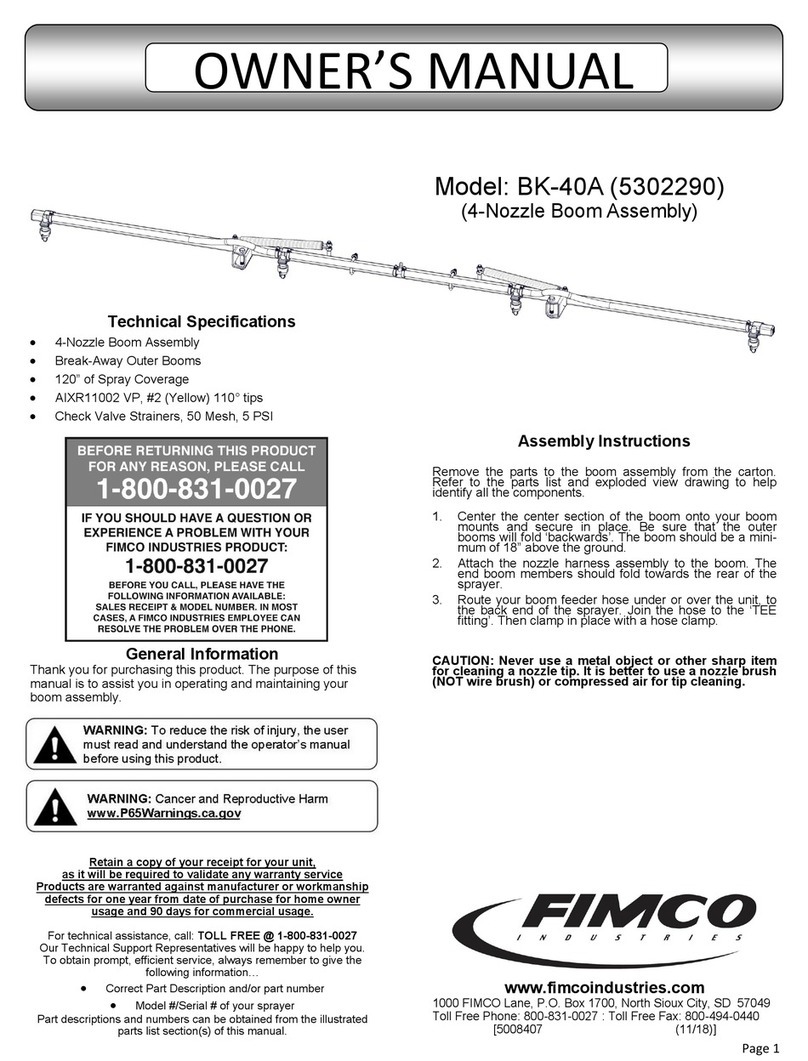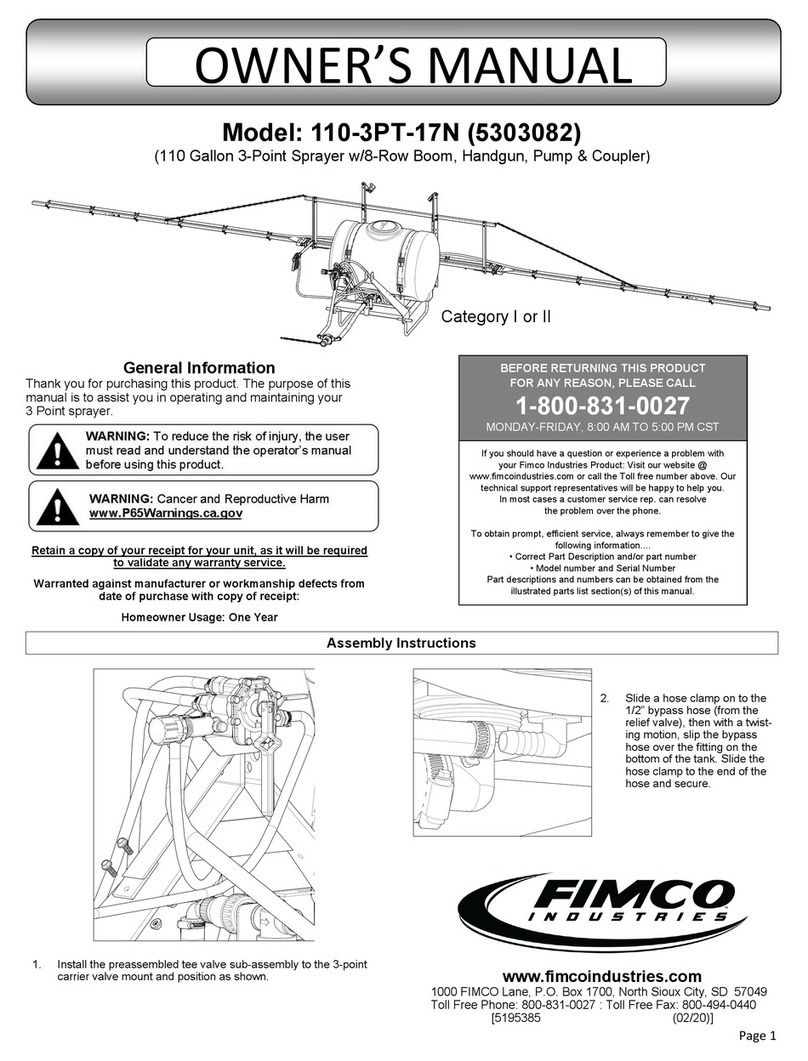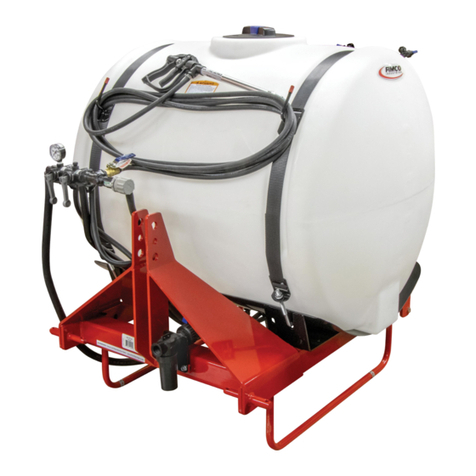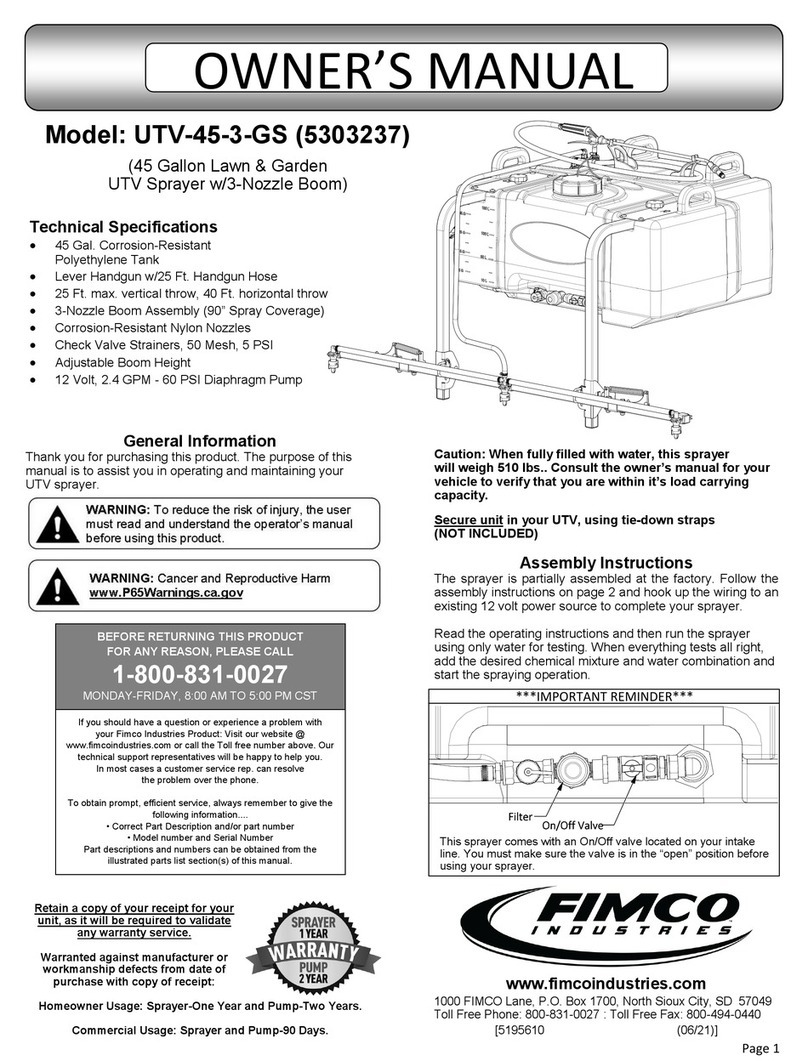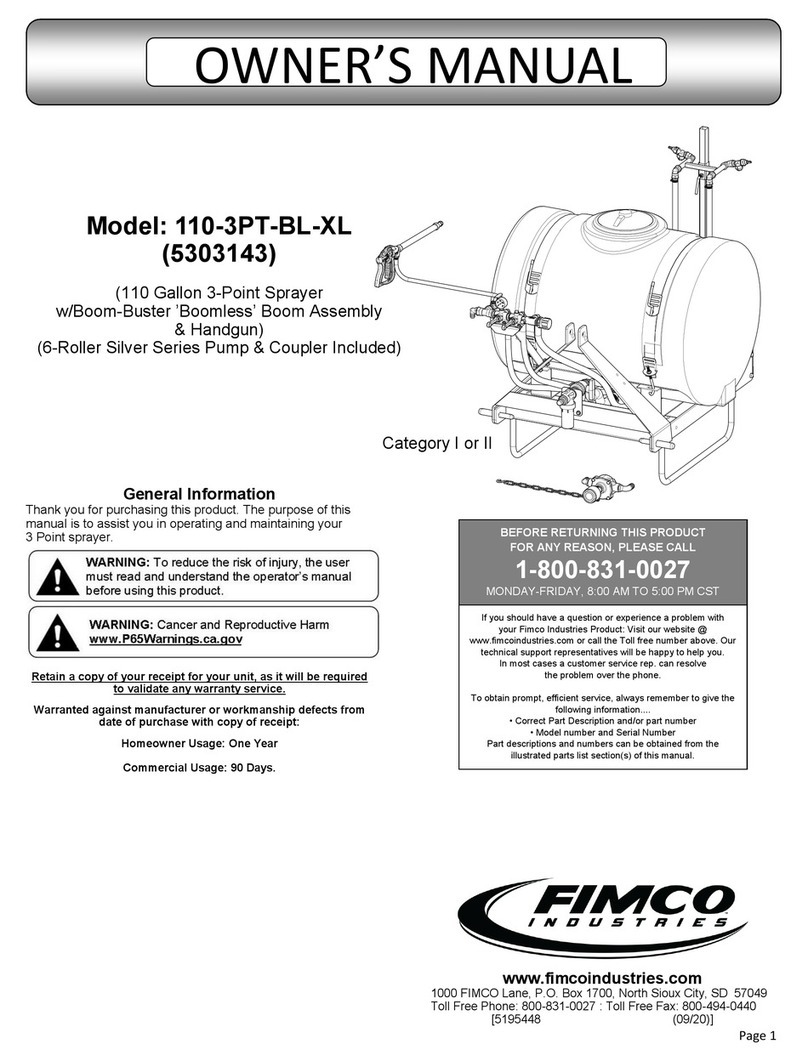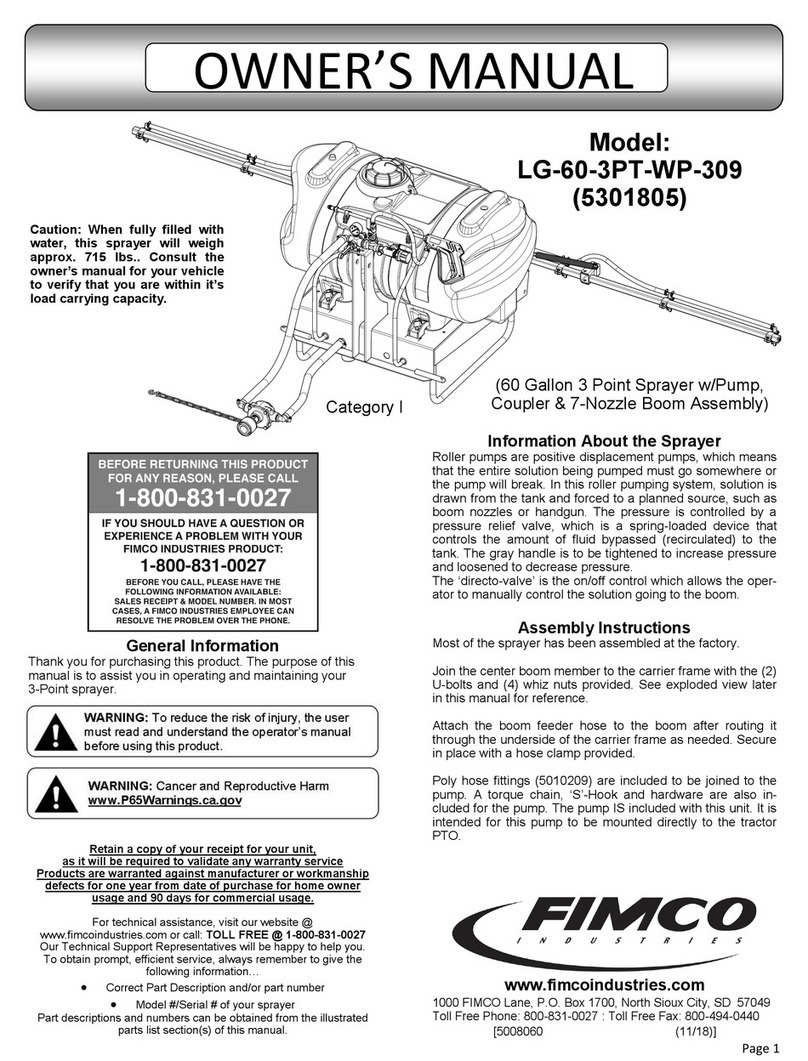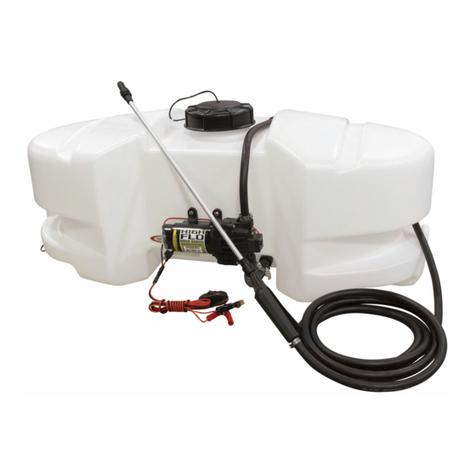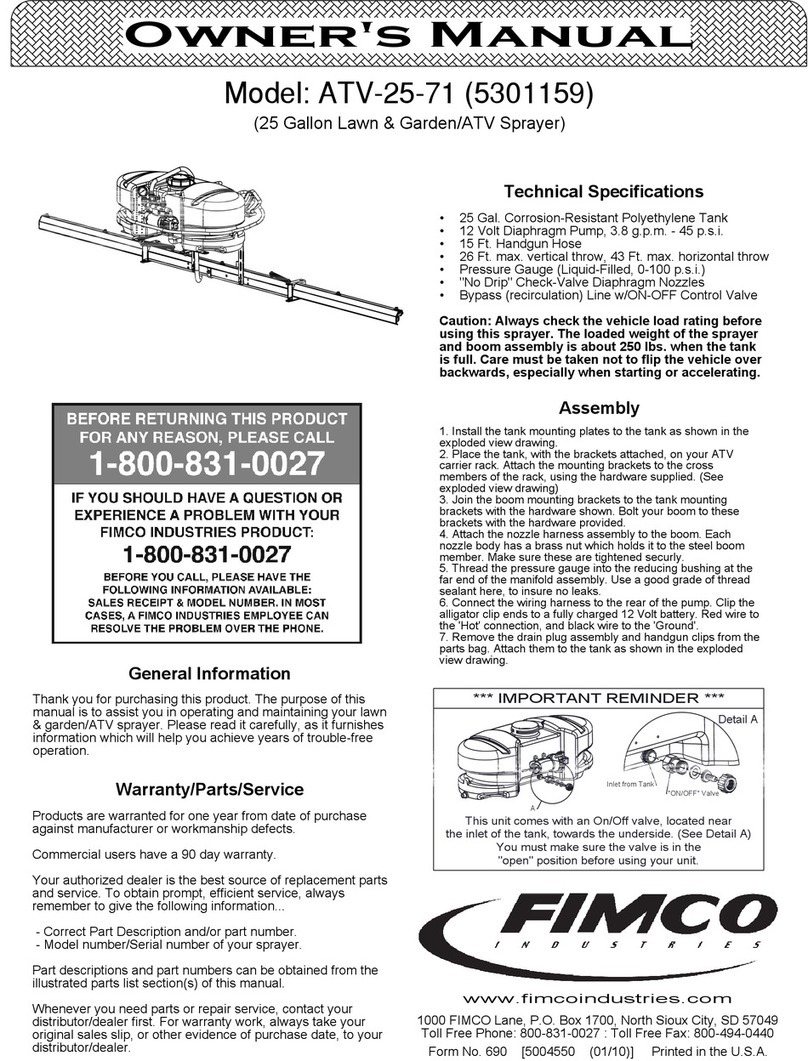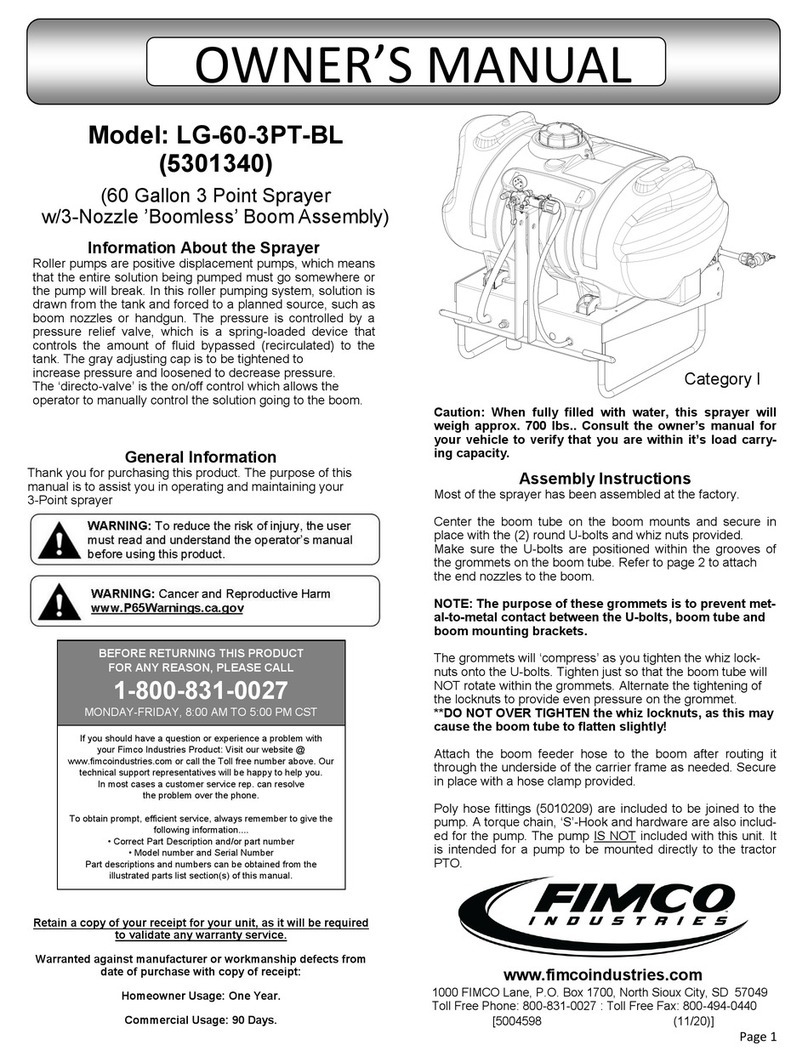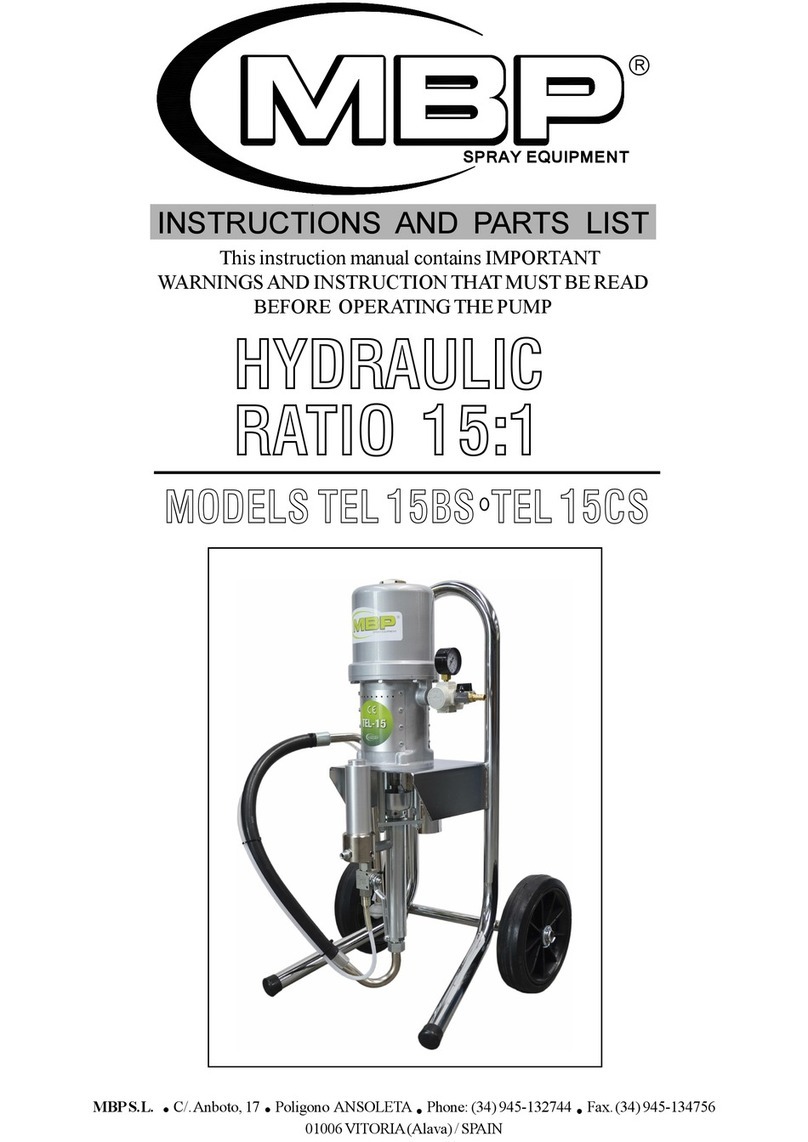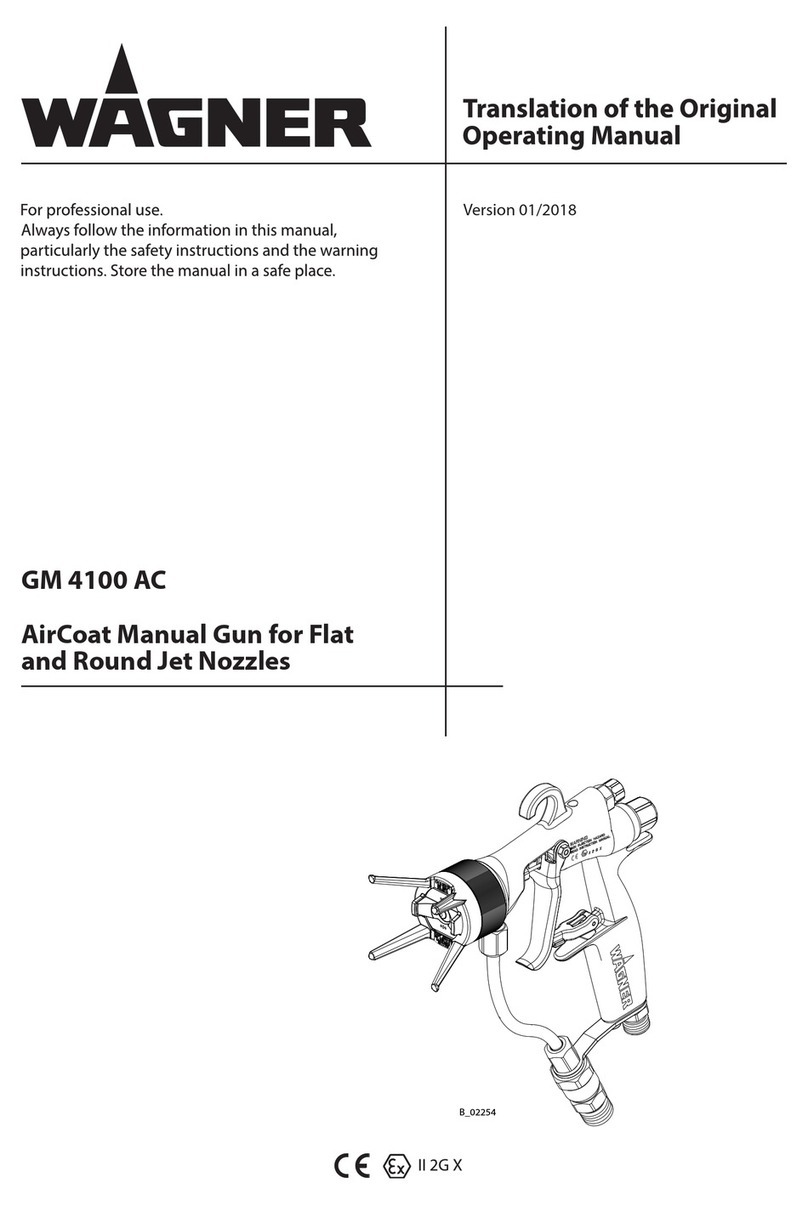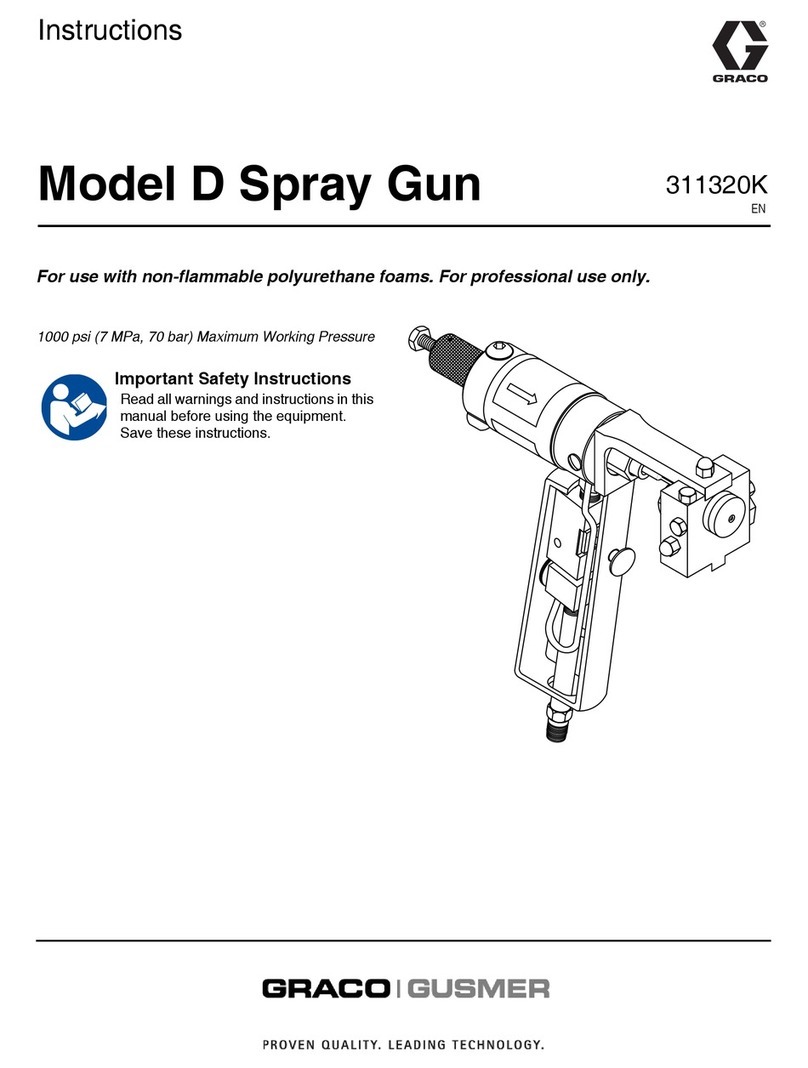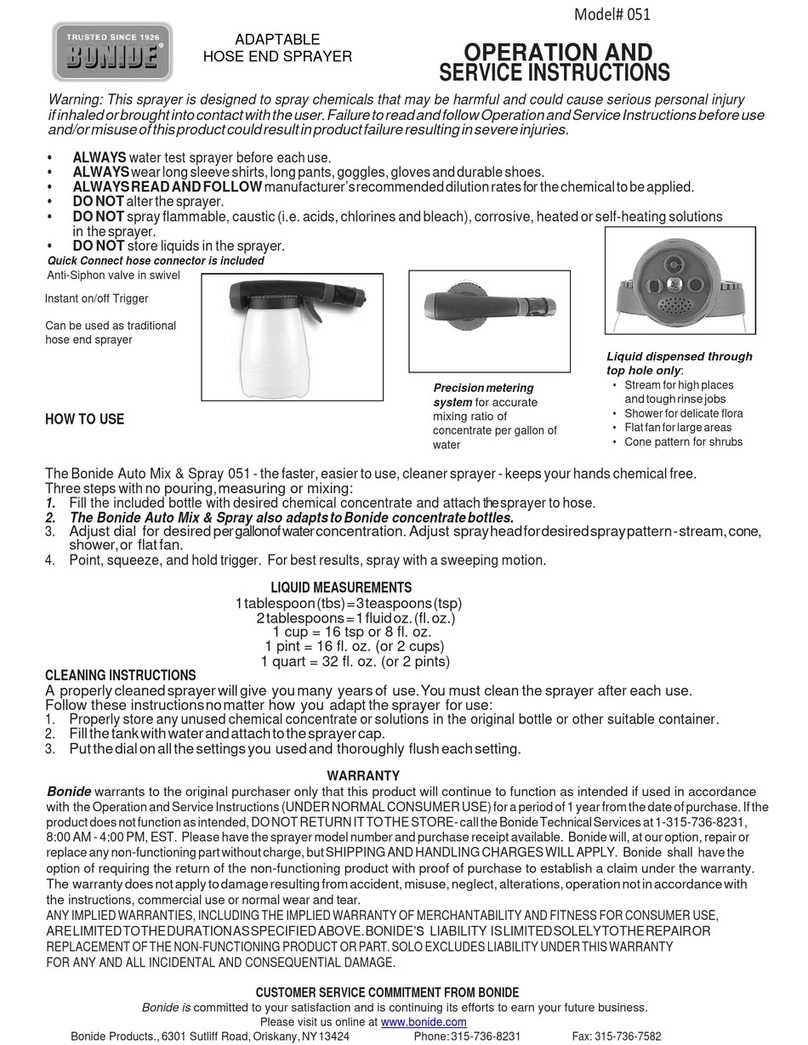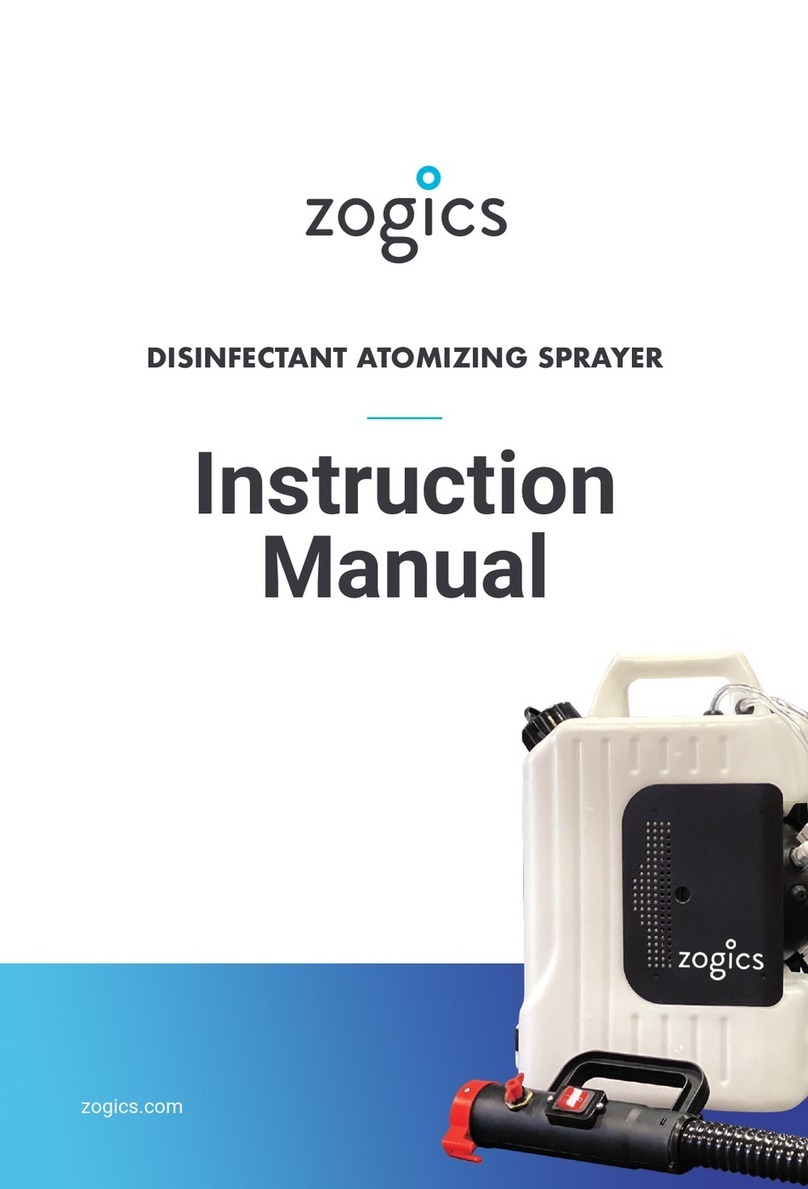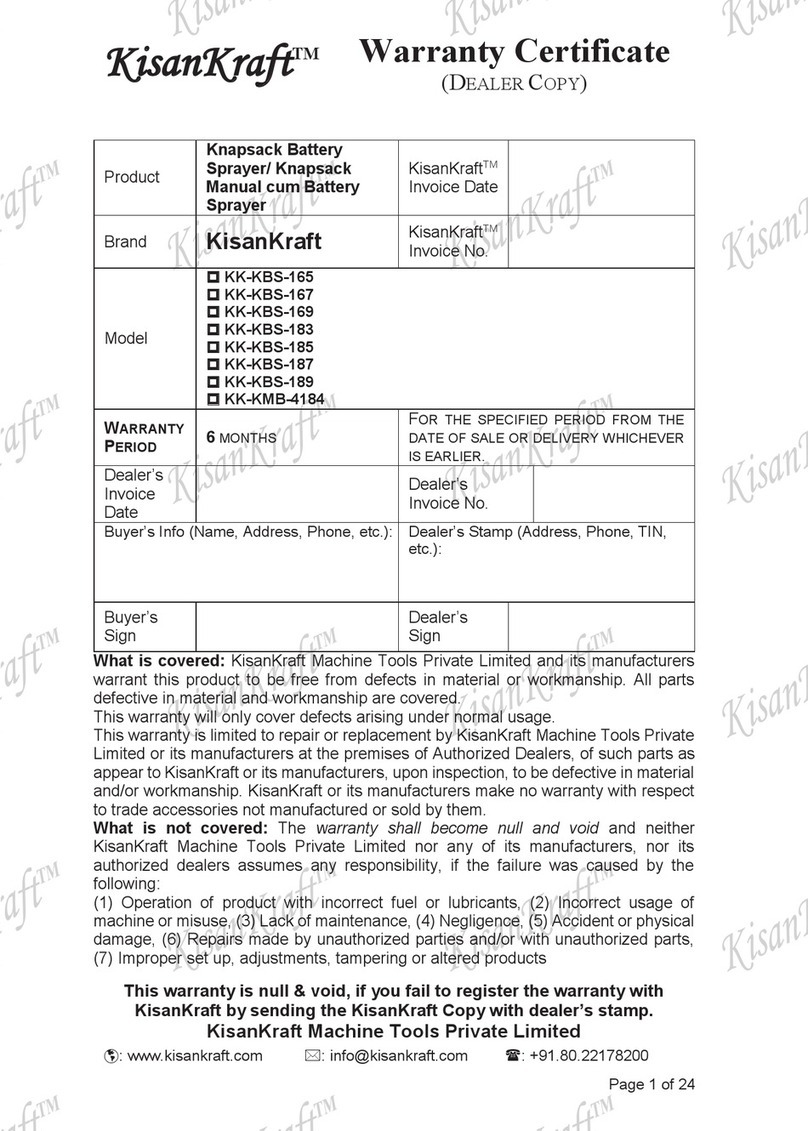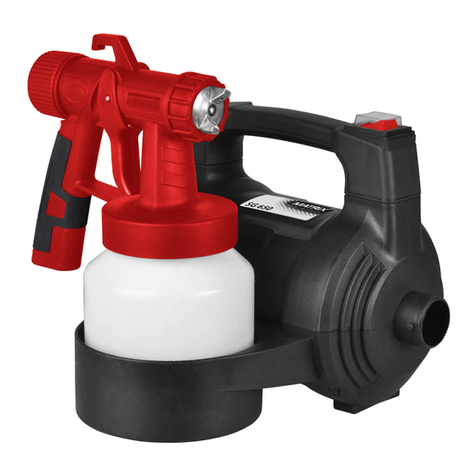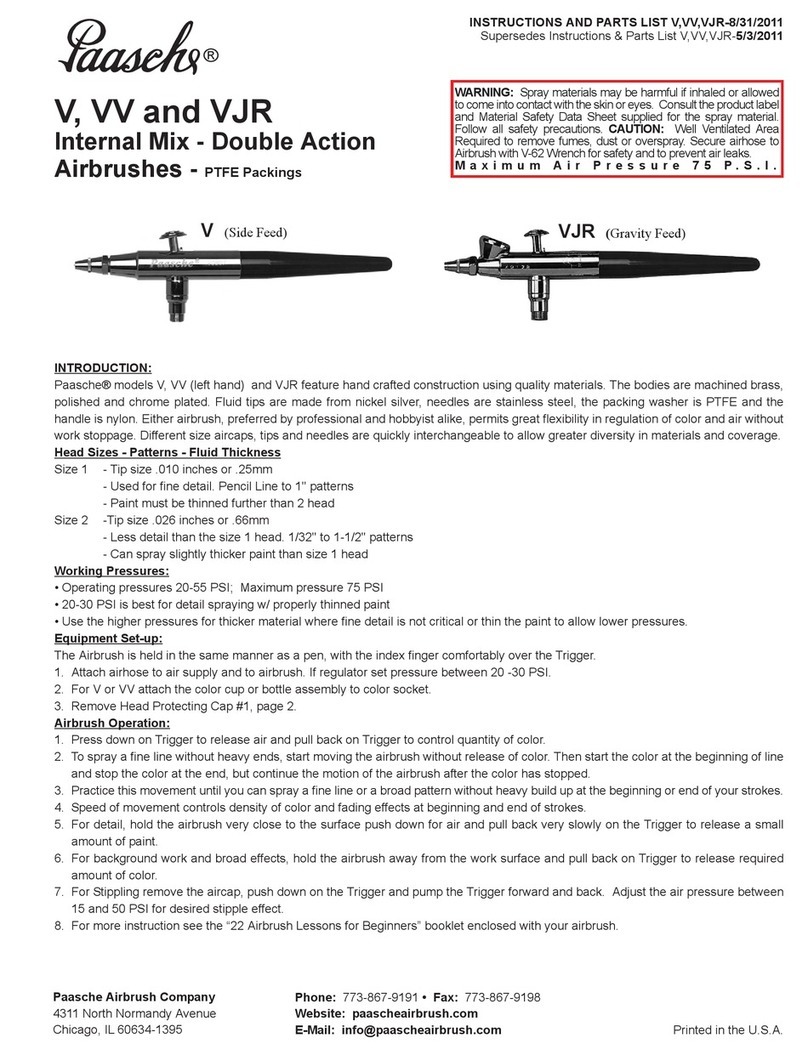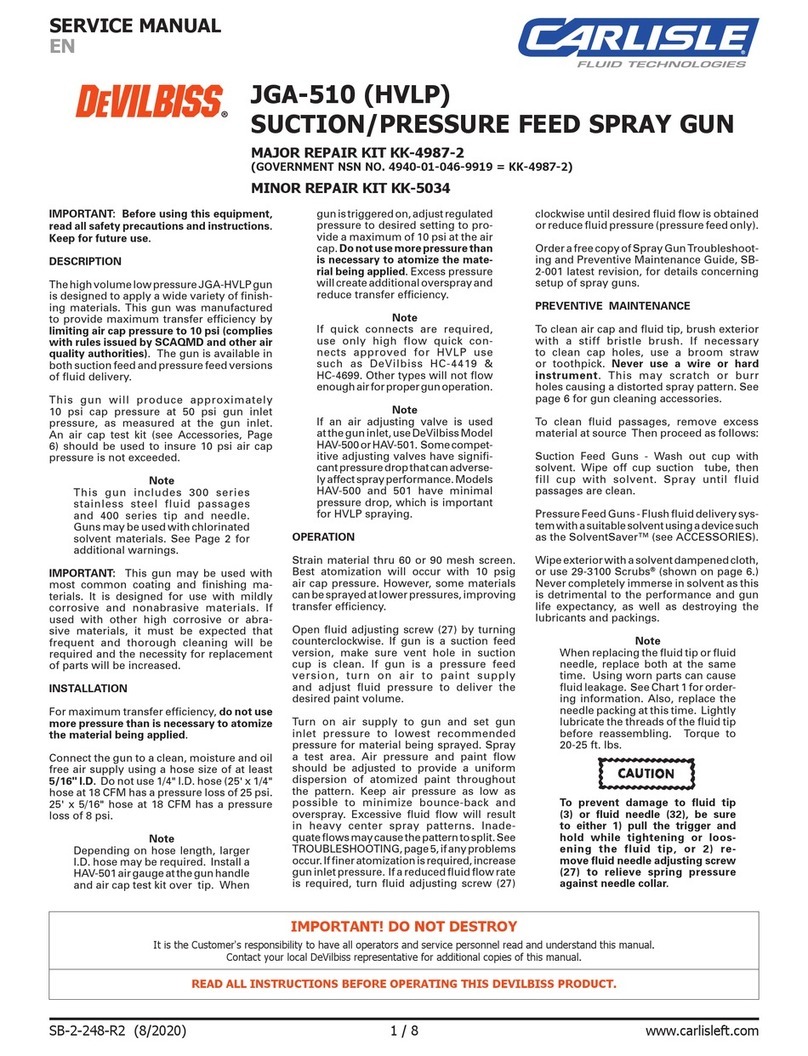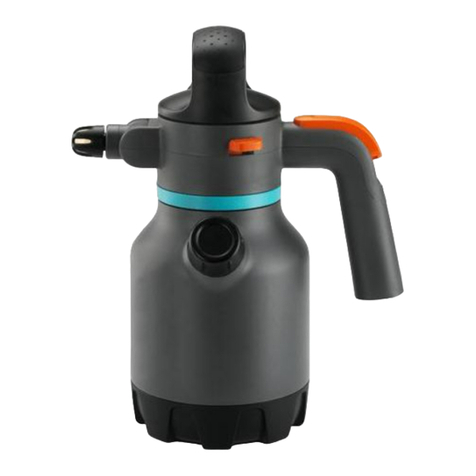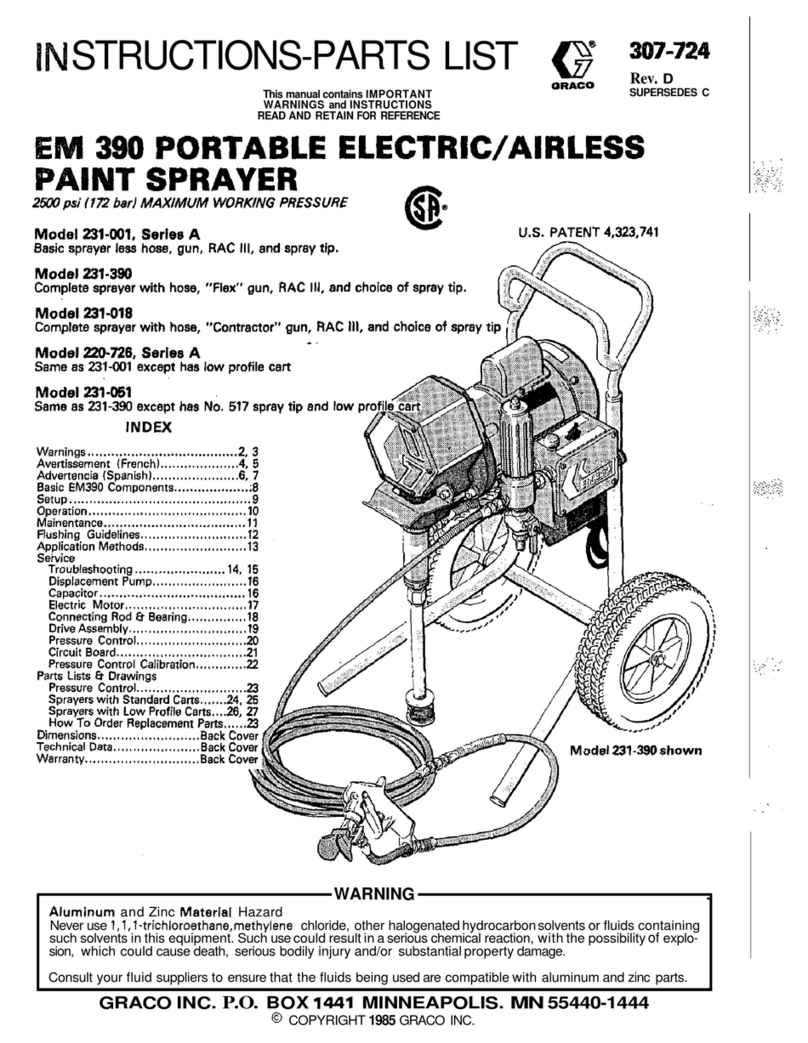Page 7
Four things must be considered before spraying with the boom.
How much chemical must be mixed in the tank.
Rate of spray (gallons per acre to be sprayed).
What pressure (p.s.i.) will be used.
Speed traveled (mph) while spraying.
Refer to the chemical label to determine your chemical mixture
See the p chart to determine the pressure to be used. The chart will also show the speed used when spraying.
Chemical labels may show applicaon rates in gallons per acre, gallons per 1000 square feet or gallons per 100 square feet. You will
note that the p chart shows 2 of these rang systems.
Once you know how much you are going to spray, then determine (from the p chart) the spraying pressure (PSI), and the spraying
speed (MPH). The pressure can be set by running the sprayer with the boom nozzles ‘on’ and then adjusng the relief valve unl
the gauge reads the desired pressure. Noce that the pressure will go up when the boom line is shut o. This is normal and the
pressure will return as before when you open the boom line. When selecng pressure from the p chart, it is a good idea to try for
the 20 or 30 p.s.i. range as this allows an excellent nozzle paern. Spraying at 10 p.s.i. begins to break up the paern and at 40
p.s.i. you may noce some dri.
Determining the proper speed of the pulling vehicle can be done by marking o 100, 200 & 300 feet. The speed chart indicates the
number of seconds it takes to travel the distances. Set the throle and with a running start, travel the distances. Adjust the throle
unl you travel the distances in the number of seconds indicated by the speed chart. Once you have reached the throle seng
needed, mark the throle locaon so you can stop and go again, returning to the same speed.
Add water and proper amount of chemical to the tank and drive to the starng place for spraying.
Only ll the tank with what you’re going to spray in a day, never leave chemicals sit in tank.
Tank Care & Maintenance
Warning: Do not use the tank as a container for fuel oils, kerosene, gasoline or any other petroleum disllate product. All polyole-
ns are soened and permeated by such products. In an enclosed area the vaporizaon of these materials from the outside sur-
face of the tank could create a dangerous condion.
Tank should not be used as a pressure vessel nor used with chemicals or soluons having a weight of more than 12 lbs. per gallon.
Store the tank in a dry dark place when not in use. Storage out of sunlight will prolong the life of the tank.
Do not drop, strike or kick the tank, especially at low temperatures. Tanks become brile and are subject to cracking at tempera-
tures below 20° Fahrenheit.
Always ush the tank with water and a neutralizing agent at the end of each use, to prevent contaminaon of soluons.
Maintenance During/Aer Spraying
Periodically close the sucon line valve and check the strainer and clean the screen. Always ush the enre plumbing system with
water or a neutralizing agent aer compleng the spraying operaon.
Proper care and maintenance will prolong the life of your sprayer.
Aer use, ll the sprayer tank part way with water. Start the sprayer and allow the clear water to be pumped through the plumbing
system and out through the spray nozzles. Rell the tank about half full with plain water and use FIMCO Tank Neutralizer and
Cleaner and repeat cleaning instrucons above. Flush the enre sprayer with the neutralizing/cleaning agent, then ush out one
more me with plain water. Follow the chemical manufacturer’s disposal instrucons of all wash or rinsing water. For the boom (if
applicable) remove the ps and screens from the nozzle assemblies. Wash these items out thoroughly. Blow the orice clean and
dry. If the orice remains clogged, clean it with a ne bristle (NOT WIRE) brush or with a toothpick. Do not damage the orice. Wa-
ter rinse and dry the ps before storing.
WARNING: Some chemicals will damage the pump valves if allowed to soak untreated for a length of me! ALWAYS ush the
pump as instructed aer each use. DO NOT allow chemicals to sit in the pump for extended mes of idleness. Follow the chemical
manufacturer’s instrucons on disposal of all waste water from the sprayer.

